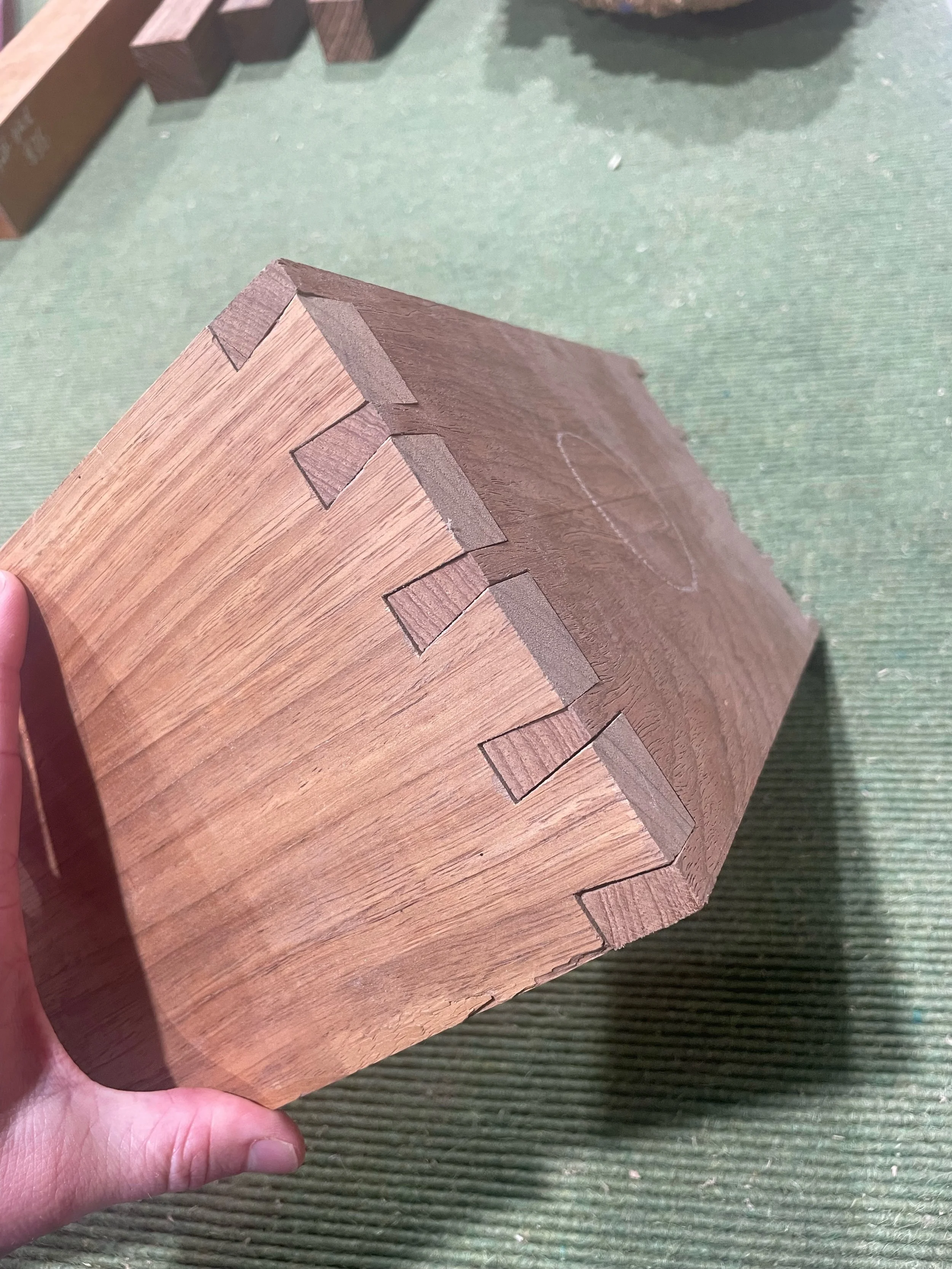There’s beauty in dovetails
Dovetail Joints
Dovetails are one of the strongest joints used in furniture making when it comes to joining wooden drawers and boxes - the strength behind the joint can be put down to a larger area of glue faces.
A dovetail joint is created by joining pieces of wood at a right angle and interlocking two pieces of wood together, similar to connecting two puzzle pieces.
Although there is a wide range of dovetails, in this article, we look into our two most commonly used joints, ‘through dovetails’ and ‘half-blind dovetails’.
The difference comes down to the visibility of the tails and pins on the sides of the boxes.
Through Dovetail Joint
This type of joint is achieved by interlocking two pieces of wood together by joining the pins and tails so it resembles interlocking fingers. The joint enables you to see the end grain from all outside surfaces of the finished furniture.
Interestingly, in the past, some woodworkers covered this joint with veneers to hide where the two pieces interlocked.
However, exposing the unique end grain and the way the two pieces interlock in a slick way is now often the preferred design for custom-made furniture.
The majority of Will Brennan Designs show the through dovetail joint as it’s a notable feature signifying skilled craftsmanship - nothing screams handmade furniture like a dovetail. For a visible example of a through dovetail, look at the image below.
Example of through dovetail joint
Half-blind Dovetail Joint
The difference between this joint and the through dovetail is you can only see the end grain from one side.
Hence, woodworkers use this joint if they do not want the end grain visible from the front of the piece.
For example, if a draw was joined using the half-blind dovetail joint, the visible dovetail side would sit on the long edge of the wood sitting within the carcass so, the front edge of the drawer was a smooth plank of wood - look at the image below.
The craftsman stops cutting the pins before getting the entire way through the wood, creating a shield so that viewers cannot see where the tails fit in the pins. For a visible example of a half-blind dovetail, look at the image below.
Example of half-blind dovetail joint
Will Brennan Designs use a basic dovetail jig called the Leigh Tool to cut their dovetails to ensure perfect fitting joints. Once the tails are slotted into the pins, glue is used to strengthen to create a strong, sturdy joint.
Dovetail joints are popular due to their beauty and attractive design. This technique would rarely be found in mass-produced wood pieces, as it’s a handmade, time-consuming labour of love.
Interested in designing your own unique Will Brennan? Submit a form.



